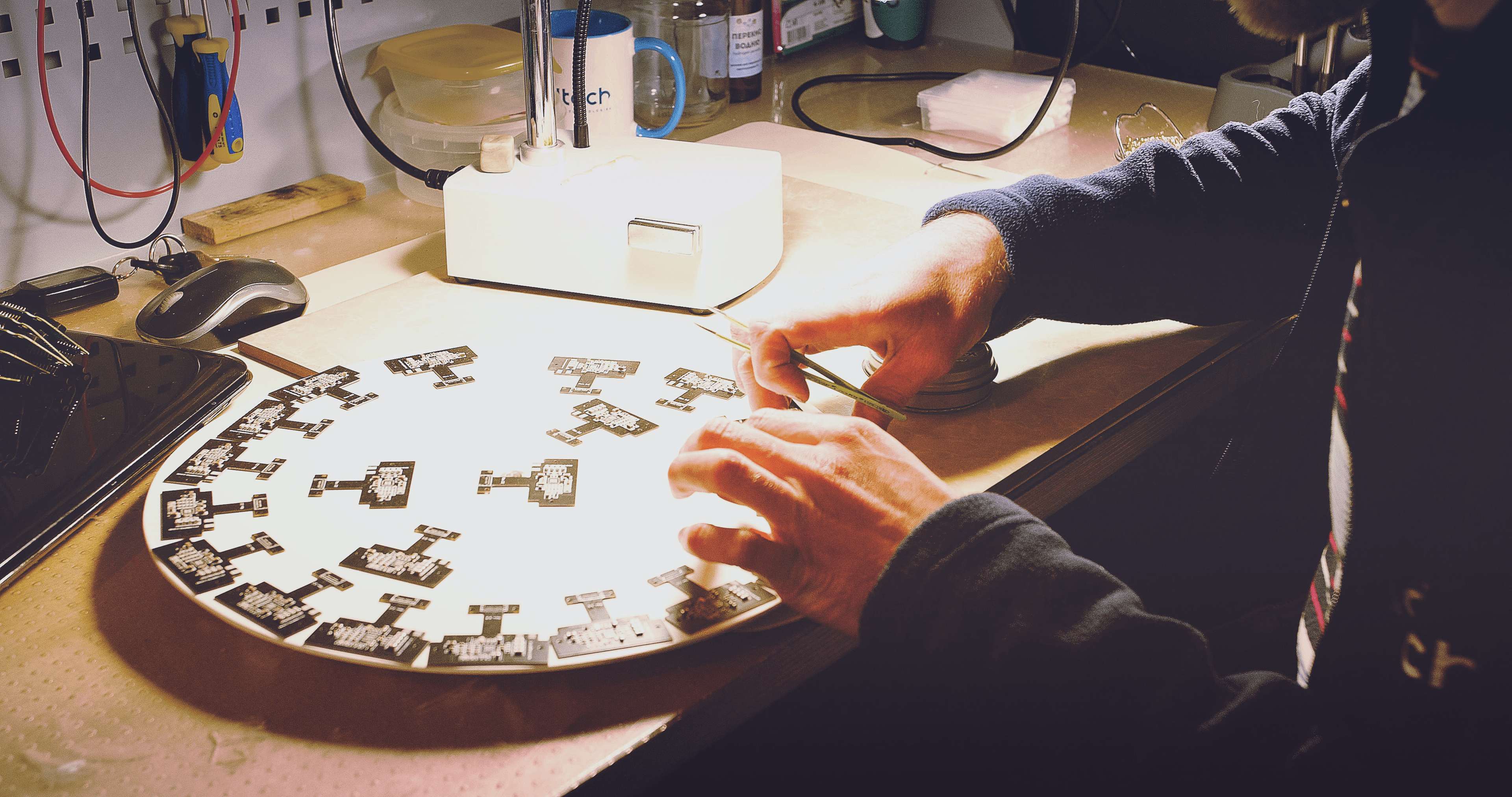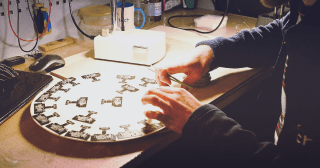

The Product Development Process Explained.
The Product Development Process Explained.
Product development is a complex and multi-faceted process that involves transforming an idea or concept into a tangible product that meets customer needs and creates value. It encompasses a series of stages, from ideation to commercialization, and requires a systematic approach to ensure success. In this article, we will explore the product development process, its key stages, and the importance of each step in bringing innovative ideas to life.
Product development is a complex and multi-faceted process that involves transforming an idea or concept into a tangible product that meets customer needs and creates value. It encompasses a series of stages, from ideation to commercialization, and requires a systematic approach to ensure success. In this article, we will explore the product development process, its key stages, and the importance of each step in bringing innovative ideas to life.
Product development refers to the entire journey of creating and launching a new product or improving an existing one. It involves a combination of creativity, market research, engineering, design, prototyping, testing, and manufacturing. The goal is to develop a product that not only meets customer expectations but also aligns with business objectives and generates a competitive advantage.
Product development refers to the entire journey of creating and launching a new product or improving an existing one. It involves a combination of creativity, market research, engineering, design, prototyping, testing, and manufacturing. The goal is to develop a product that not only meets customer expectations but also aligns with business objectives and generates a competitive advantage.
The product development process typically consists of several key stages, although the specific steps may vary depending on the industry, company, and product. Let's explore each of these stages in detail:
The product development process typically consists of several key stages, although the specific steps may vary depending on the industry, company, and product. Let's explore each of these stages in detail:
1. Idea Generation: The first stage of product development involves generating ideas for new products or identifying opportunities for product improvements. This can be done through brainstorming sessions, customer feedback, market research, or technological advancements. The goal is to identify a product concept that has the potential to address a market need or solve a problem.
1. Idea Generation: The first stage of product development involves generating ideas for new products or identifying opportunities for product improvements. This can be done through brainstorming sessions, customer feedback, market research, or technological advancements. The goal is to identify a product concept that has the potential to address a market need or solve a problem.
2. Concept Development: Once an idea has been generated, it is essential to evaluate its feasibility and potential viability. This stage involves conducting market research, analyzing customer needs, and assessing the technical and financial feasibility of the concept. The goal is to refine the idea and develop a clear concept that can be further developed.
2. Concept Development: Once an idea has been generated, it is essential to evaluate its feasibility and potential viability. This stage involves conducting market research, analyzing customer needs, and assessing the technical and financial feasibility of the concept. The goal is to refine the idea and develop a clear concept that can be further developed.
3. Design and Engineering: In this stage, the concept is transformed into a detailed design that encompasses both the product's aesthetics and its technical specifications. This involves collaboration between industrial designers, engineers, and other stakeholders to create a product that is visually appealing, functional, and manufacturable. At UDTECH, we have successfully undertaken numerous projects that showcase the product development process from inception to completion. You can explore these projects at https://udtech.co/cases, where you will see how the product development process has been instrumental in bringing innovative ideas to life.
3. Design and Engineering: In this stage, the concept is transformed into a detailed design that encompasses both the product's aesthetics and its technical specifications. This involves collaboration between industrial designers, engineers, and other stakeholders to create a product that is visually appealing, functional, and manufacturable. At UDTECH, we have successfully undertaken numerous projects that showcase the product development process from inception to completion. You can explore these projects at https://udtech.co/cases, where you will see how the product development process has been instrumental in bringing innovative ideas to life.
4. Prototyping and Testing: Prototyping is a crucial step in the product development process as it allows for the creation of a physical or digital model of the product. This prototype is then tested to evaluate its performance, functionality, and user experience. Iterative testing and refinement help identify and address any design flaws or usability issues before moving forward.
4. Prototyping and Testing: Prototyping is a crucial step in the product development process as it allows for the creation of a physical or digital model of the product. This prototype is then tested to evaluate its performance, functionality, and user experience. Iterative testing and refinement help identify and address any design flaws or usability issues before moving forward.
5. Manufacturing and Production: Once the design and prototype have been finalized, the product moves into the manufacturing stage. This involves selecting suppliers, sourcing materials, setting up production processes, and ensuring quality control. Efficient manufacturing practices and supply chain management are crucial to meet production timelines and cost targets.
5. Manufacturing and Production: Once the design and prototype have been finalized, the product moves into the manufacturing stage. This involves selecting suppliers, sourcing materials, setting up production processes, and ensuring quality control. Efficient manufacturing practices and supply chain management are crucial to meet production timelines and cost targets.
6. Launch and Commercialization: The final stage of the product development process involves bringing the product to market. This includes developing a marketing strategy, creating promotional materials, establishing distribution channels, and launching the product to the target audience. Ongoing monitoring and feedback collection are essential to gather insights and make necessary adjustments to optimize the product's success.
6. Launch and Commercialization: The final stage of the product development process involves bringing the product to market. This includes developing a marketing strategy, creating promotional materials, establishing distribution channels, and launching the product to the target audience. Ongoing monitoring and feedback collection are essential to gather insights and make necessary adjustments to optimize the product's success.
Throughout the product development process, it is crucial to maintain a customer-centric approach. Understanding customer needs, preferences, and pain points is essential for creating a product that resonates with the target market. Regular market research, user testing, and feedback collection help ensure that the product meets customer expectations and delivers value.
Throughout the product development process, it is crucial to maintain a customer-centric approach. Understanding customer needs, preferences, and pain points is essential for creating a product that resonates with the target market. Regular market research, user testing, and feedback collection help ensure that the product meets customer expectations and delivers value.
In conclusion, the product development process is a comprehensive journey that involves multiple stages, from idea generation to commercialization. Each stage plays a crucial role in bringing innovative ideas to life and ensuring the success of the final product. At UDTECH, we have a deep understanding of the product development process, and it is at the core of all the projects we undertake. To witness the impact of product development in real-world projects, explore the examples showcased at https://udtech.co/cases. Embrace the product development process as a strategic framework to transform ideas into successful products that meet customer needs and drive business growth.
In conclusion, the product development process is a comprehensive journey that involves multiple stages, from idea generation to commercialization. Each stage plays a crucial role in bringing innovative ideas to life and ensuring the success of the final product. At UDTECH, we have a deep understanding of the product development process, and it is at the core of all the projects we undertake. To witness the impact of product development in real-world projects, explore the examples showcased at https://udtech.co/cases. Embrace the product development process as a strategic framework to transform ideas into successful products that meet customer needs and drive business growth.